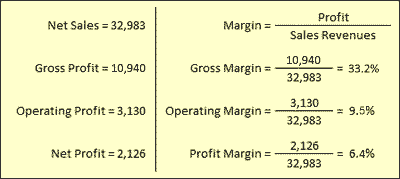5 4: Seller Entries under Perpetual Inventory Method Business LibreTexts
Content

FOB Shipping Point means the buyer is responsible for shipping and must pay and record for shipping. As the seller, we will record any shipping costs in the Delivery Expense account as a debit.

For instructions on how to find transactions in Peachtree, including how to open an invoice, see the Find transactions page in this learning center. Date Account Debit Credit May 30 Cash (30,000 – 400) 29,600 Accounts Receivable (30,000 – 400) 29,600 To record customer payment less allowance and no discount. Date Account Debit Credit May 4 Delivery Expense 100 Cash 100 To record shipping costs for sales. On May 21, Smith sold $20,000 of merchandise for cash with shipping terms FOB Shipping Point. On May 4, Smith sold $30,000 of merchandise with credit terms of 2/10, n30 and shipping terms FOB Destination.
Do Sales Returns & Allowances Go on the Income Statement?
The original memo is sent to the customer and the duplicate copy is retained. In the following screenshot notice that the amount of the credit memo appears in the Other Applied Credits line near the bottom of the window. The amount reported as Net Due has been updated to reflect that the amount of the credit memo has been subtracted from the Invoice Total. Instead, you are advised of the credit memo number to use, so you should enter that number into the Credit No. field.
Some companies do not use the intermediary sales return account because it is a contra account – meaning that it is just a deduction from another account. The buyer does not send the merchandise back to the seller but receives a reduction in the total amount that they have to pay the seller for the order. Sales returns are typically granted when defective products are sent back by the buyer to the seller.
Profit Margin, Gross Margin, and Net Profit Margin: A Quick Guide
The company uses this account to track all sales returns and allowances, which are then deducted from sales revenue on the company’s income statement. In theory, sellers could record both sales returns and sales allowances as debits to the Sales account because they cancel part of the recorded selling price. However, because the amount of sales returns and sales allowances is useful information to management, it should be shown separately. A customer buys a product from a store for $300 and then returns it. The store will refund the customer $300 and update their records to show a sales return of $300. The store’s accounting system will automatically debit the sales return and allowance account for $300 and credit the cash account for $300. A contra-revenue account is a liability from revenue which helps in determining whether to omit certain sales transactions, which would otherwise be mistaken as revenue.
What is the meaning of sales return?
A sales return is when a person returns a product back to a company. This can be because it was defective, incorrect, or not exactly what they wanted.
Returns are the opposite of the transaction that they relate to, therefore, sales return is the opposite of sales. Sales are a form of income so they go on the credit side of the trial balance. Sales returns, on the other hand, will reduce the income generated from sales as the customers return the purchased goods, and so will go on the debit side. This accounting system is known as a How to Record a Sales Return for Accounting double-entry system also called T-account which helps to provide accuracy in financial records. In the T-account, the debits are positioned on the left-hand side and the credits are positioned on the right-hand side of the ledger. Accountants make use of debits and credits to record every business transaction and use the balancing T-account system to generate financial statements.
What is the difference between sales return and purchase return journal entries?
This credit memorandum becomes the source document for a journal entry that increases the sales returns and allowances account and decreases accounts receivable. Although sales returns and sales allowances are technically two distinct types of transactions, they are generally recorded in the same account. Sales returns occur when customers return defective, damaged, or otherwise undesirable products to the seller. Sales allowances https://business-accounting.net/ occur when customers agree to keep such merchandise in return for a reduction in the selling price. Sales returns and allowances are typically recorded in a sales return or allowance account. Alternatively, some businesses may choose to record sales returns and allowances in the sales revenue account directly. Aside from calculating the net sales, a journal entry will also need to be made to account for the return.

